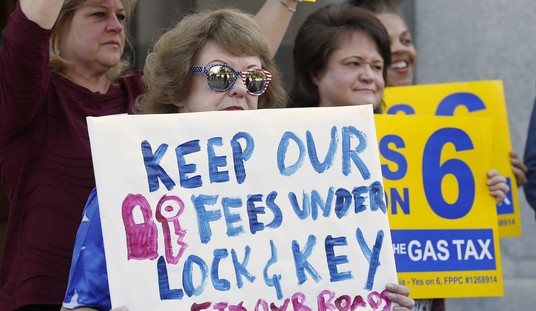Hotair says California teacher’s unions are moving to block online educational courses in the University of California system arguing that they open the door to hiring fewer teachers and increasing the workload of those who are retained.
Inside Higher Ed says that the University of California chapter of the American Federation of Teachers has used its bargaining power to persuade the University of California to ban “online courses or programs that would result in ‘a change to a term or condition of employment’ of any lecturer without first dealing with the union.” Administrators and union officials have a difference of opinion about what exactly was forbidden by the agreement.
The union president says he thinks the university, which would be bound by the deal for the next three years, did not grasp the implications of the online provision.
“We feel we got something that the university didn’t really understand,” he says.
But the university says it grasps the implications of the pact quite well — and that Samuels and his cohort are the ones who seem to misunderstand it.
“They do not have the power to block the university from implementing new online programs,” says Dianne Klein, a spokeswoman for the Office of the President.
“The most the [union’s] bargaining unit could do,” Klein says, “is provide written notice saying, ‘We don’t like this.’ ” The university would then have to sit down with the union to try to resolve the issue no later than January, 2013. “But the union would not have the power to say, ‘We’re shutting down the online program’.
But my simple minded understanding of the agreement is this: you shall not fire, or make it eventually possible to fire any union member when designing an online course.
Of course, the unions had objections on more philosophical grounds. They argued that online courses failed to provide “some of the important social benefits of classroom education”. There was something special about a teacher in a classroom.
That is true, but for many decades the best universities and graduate schools have supplemented their top teachers with lower cost props such as teaching assistant-taught tutorial sessions and extended reading lists. Before personal computers existed students went online if reams of paper — photocopied extracts from journal articles — could in some sense be called online. These were the teaching notes, background material and assigned reading that the student pored over through the night so that he could be ready to argue his case in the classroom the next day.
But neither poorly paid teaching assistants nor unpaid paper posed such a threat to “accredited teachers” as online courses. Earlier this year, the Idaho Education Association representing teachers, voiced its concerns over a proposal to require students to take some online courses.
Sensing perhaps that online education would eventually have to given its due, IEA pushed for the “blended” educational model, in which the use of online material was permissible, but only a teacher present in the room. As one article put it: “Emerging models in other countries, such as Singapore and Australia, as well as in higher education, suggest that a large part of the future of education will involve providing content, resources, and instruction both digitally and face-to-face in the same classroom.” Here is how “blended” education was defined in the article. It says: use as much technology as you like, but have a teacher in the room.
“Blended learning should be viewed as a pedagogical approach that combines the effectiveness and socialization opportunities of the classroom with the technologically enhanced active learning possibilities of the online environment, rather than a ratio of delivery modalities. In other words, blended learning should be approached not merely as a temporal construct, but rather as a fundamental redesign of the instructional model with the following characteristics:
A shift from lecture- to student-centered instruction in which students become active and interactive learners (this shift should apply to the entire course, including face-to-face contact sessions);
Increases in interaction between student-instructor, student-student, student-content, and student-outside resources;
Integrated formative and summative assessment mechanisms for students and instructor.”
Future instruction is probably going to require some mix of face-to-face teaching and online learning, according to the comparative advantages of each. The problem is that while face-to-face teaching is by now a well understood art, online learning is still an expanding field. The optimal mix between a “live” teacher and material is likely to vary with the class aptitude, circumstance and the subject matter at hand. In an optimal world, the mix will take whatever form is most effective for the student. But in a union-dominated world the mix will be severely constrained by the need not to displace any union teachers. That will mean that instructional modes will be determined around the requirement the hiring numbers up.
Modes of instruction are never context free. Online instruction is better in some places than in others. The NEA argued that “laptops cannot replace ‘caring, competent’ adults in the classroom.” That is easy to say for good schools. But what about the bad ones? There is a real possibility that students with laptops could learn more than sitting dumbfounded before an incompetent time-serving hack or being forced to attend a drug-ridden and dangerous learning environment.
The lack of good teachers was at first assumed to spring from a paucity of resources. For the longest time the educational ‘reformers’ have defined the problem in terms of the lack of money. Back in 1991, Time Magazine quoted education expert Jonathan Kozol who argued that social policy during the Reagan-Bush era “has been turned back almost 100 years.” The problem he argued was “local control”. To make education better the government had step in to equalize the funding. Even then “fairness” was the panacea to everything. Another said, “Our kids would fly if we had resources similar to the rich districts”.
So they set about spending more money than ever. But the kids never flew. Although public and elementary student per capita spending has risen in constant 2008 dollars from $7,858 in 1991 to $10,441 in 2008, the US finds itself lagging behind such countries as China, Finland, Japan, The Netherlands, Canada and South Korea, even though it spends more than most of these countries. The problem, according to the Christian Science Monitor, is bad teachers. “Almost half of its K-12 teachers come from the bottom third of college classes.” Apparently more money doesn’t necessarily mean you get better teachers.
Another US hurdle is teacher training. Many states require a master’s degree in education in order to be certified to teach. This automatically locks out a talented population such as second-career experts in a field who don’t want to invest the time or money in a graduate degree that’s often short on classroom skills and long on pedagogy.
Perhaps one of the reasons that the California teachers unions fear online courses so much is because these are precisely the kinds of materials likely to be produced by “second-career experts”. The Christian Science Monitor says the next US education reform revolution should be “higher teacher quality”. But staging a revolution against the unions can be daunting. The CSM sites one approach: the Canadians more or less bribed their teacher unions to improve their standards.
Unions need to accept that the main goal is high teacher performance and student outcomes, not job preservation. That’s what the teacher union did in Ontario, Canada, according to the paper based on the OECD findings.
Teachers in Ontario are heavily organized. Yet, in 2003, the union and the premier of Ontario reached a grand bargain based on the need to elevate student achievement.
“The educators, through their union, agreed to accept responsibility for their own learning and the learning of their students; the government agreed to supply all of the necessary support,” according to the report.
The paper, called “What the U.S. Can Learn from the World’s Most Successful Education Reform Efforts,” says that Ontario students subsequently shot up from the bottom to the top of test scores.
The “lesson” is that the same bribery technique can work in the US. At all events the unions must be kept in the loop whether in improved teacher training or in online course design. Online courses are probably going to take their place in the schooling system, only but as part of a “blended” environment. The kids will be free to access online courses, but only with a union member in the room.
Storming the Castle at Amazon Kindle for $3.99










Join the conversation as a VIP Member